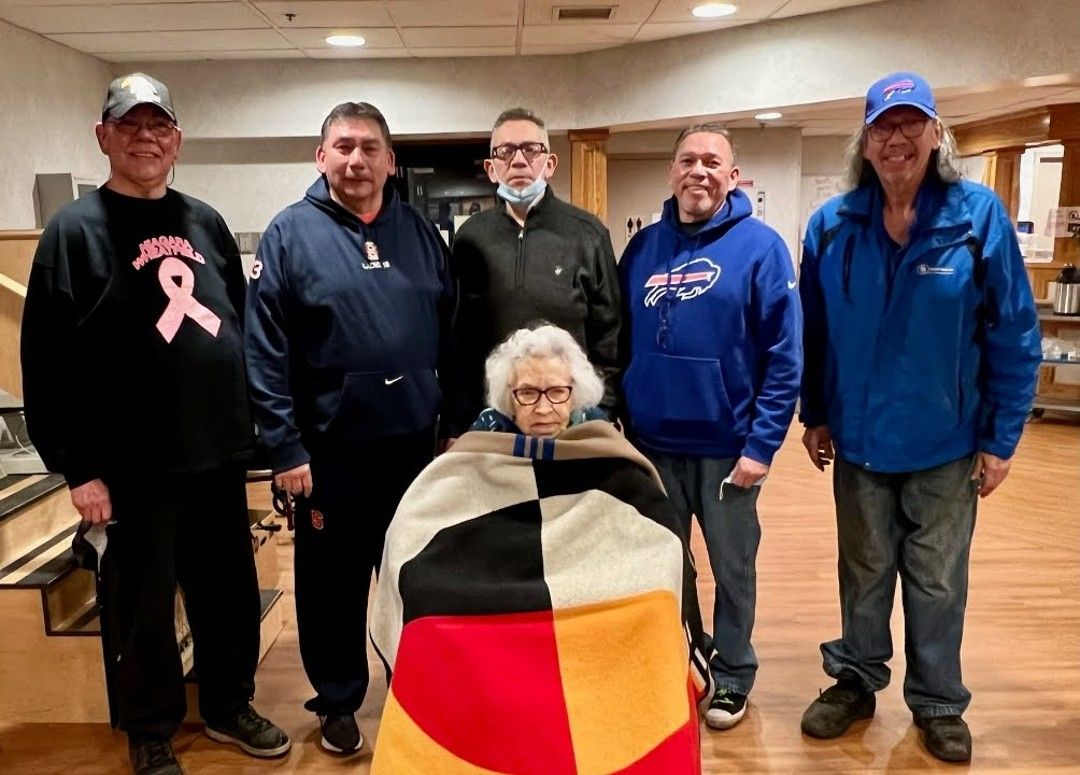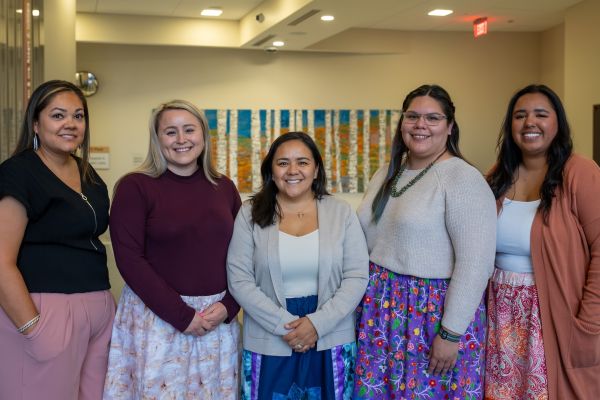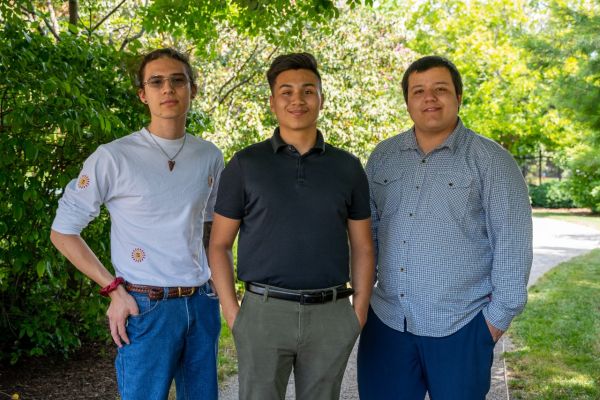Carolyn Henry is 91 years old and survived breast cancer 20 years ago. But when she was diagnosed with multiple myeloma last fall, there was a brand-new tool at her disposal that she could not access earlier: a patient navigator.
Ray Henry, one of Carolyn’s five sons, says his mother was diagnosed with multiple myeloma — the second most common type of blood cancer that happens when plasma cells multiply out of control — after complaining of pain in her left arm. When he and his brothers took her to an emergency room for an examination, the doctor there asked when she had fallen because there appeared to be a broken bone in her arm. “She’s 91. If she fell, she couldn’t get up without help,” Ray says, explaining that his mother could not have fallen without them knowing. “They found the break was caused by the multiple myeloma. She had the pain in her left arm but her right side was bad with cancer.”
Shortly after she was diagnosed, her family connected with the Indian Health Service (IHS) office in Lockport and was introduced to Nancy Washburn, an enrolled Mohawk of Six Nations and patient navigator from the Department of Indigenous Cancer Health at Roswell Park Comprehensive Cancer Center. From the start, Ray says he and his family have been in close, near constant, communication with Washburn and her counterparts at IHS to help them get their mother the care she needs.
“This would be almost impossible to try and sort through without them,” Ray says. “They’ve been awesome. They’re giving us insight into the issues of elder healthcare. We’re lucky that we have people to help us.”
When Ray and his brothers bring their mother to Roswell Park for her appointments, Washburn greets them in the lobby and accompanies them to meet with her doctors. “I translate all the medical terminology and I try to clear up any misunderstandings and do a lot of the middle work between Roswell Park and IHS,” she says. “I follow-up with Ray and make sure (Carolyn’s) medication list is correct and her appointments are set up and she’s available for transportation.”
Washburn has been a patient navigator for 18 months since the program started thanks to a grant from the Bristol Myers Squib Foundation. “Our whole purpose is to help break down the barriers, that fear of the healthcare system within the Native American community, because it’s scary for them.”
There are seven navigators under the Bristol Meyers Squib grant, three with the program and four with the rural side of the grant working in federally qualified health centers in Western New York. Washburn is responsible for working with tribal communities and the IHS office in Niagara County. Two other navigators, Marissa Haring (Seneca) with the Seneca Nation in Cattaraugus, Erie and Chautauqua counties, and David Silverheels (Seneca) with the Seneca Nation of the Allegany territory in Salamanca, work to build relationships with community members, while two others, Chelsea Redeye (Walker River Paiute) and Rena Phearsdorf (Seneca), along with Community Patient Navigators Kelly Standage and Laura Brady, work with patients who go through federally qualified health centers.
A friendly helping hand
Ray, who lives in the Tuscarora territory, says the community ties and having someone who looks like them and has a similar background as a point of contact at Roswell Park is a big help and reassurance. Their connections go deeper: He used to play lacrosse with Washburn’s father a few decades ago. “Seeing someone from your own culture, they understand. They understand how you think.”
He and his brothers are grateful for all the help Washburn has provided. “I talk to Nancy a lot. Even just for the paperwork, or to go to for advice, it’s unbelievable (helpful to have a contact). Nancy keeps saying, call me any time you need anything. Any time really is any time for her, it’s literally any time I need something. When we go to Roswell Park, Nancy will meet us there and navigate the process. She guides us through the hospital. The medical terminology, she explained it. She would sit and tell us what the doctors are talking about. She translates everything for us and will make sure we understand everything and know what to expect. It may not seem like much but to me it’s invaluable. As things went on, it was easier for us to take our mom to appointments, but Nancy would still call and check in weekly to make sure everything was OK. She still followed up.”
Never miss another Cancer Talk blog!
Sign up to receive our weekly Cancer Talk e-newsletter.
Sign up!Washburn understands, better than most, what Ray and his family is going through and the massive amounts of detailed and complicated information cancer patients receive all at once. She has a personal connection to cancer. “It’s very overwhelming. Having that extra support person there to pick up the pieces you’re missing as all this information is spewed at you is extra helpful.”
Ray encourages people in his community not to think of Roswell Park as a scary place. “Don’t be afraid to contact them,” he says. “When people hear cancer, they think it’s one thing. There are all kinds. It’s not a generic term. Each person we deal with, they’re experts. They help cushion the shock of the information. They don’t let that news hit you as hard as it would without them. It’s hard enough to keep up with your everyday lives without having to be here, deal with the bills, having to find someone to watch your kids if you have them. Everyone here at Roswell Park is here to push you back up. I haven’t had a bad moment with them.”
Editor’s Note: Cancer patient outcomes and experiences may vary, even for those with the same type of cancer. An individual patient’s story should not be used as a prediction of how another patient will respond to treatment. Roswell Park is transparent about the survival rates of our patients as compared to national standards, and provides this information, when available, within the cancer type sections of this website.


